Yunyang Zhang
Uncertainty Guided Ensemble Self-Training for Semi-Supervised Global Field Reconstruction
Feb 23, 2023



Abstract:Recovering a globally accurate complex physics field from limited sensor is critical to the measurement and control in the aerospace engineering. General reconstruction methods for recovering the field, especially the deep learning with more parameters and better representational ability, usually require large amounts of labeled data which is unaffordable. To solve the problem, this paper proposes Uncertainty Guided Ensemble Self-Training (UGE-ST), using plentiful unlabeled data to improve reconstruction performance. A novel self-training framework with the ensemble teacher and pretraining student designed to improve the accuracy of the pseudo-label and remedy the impact of noise is first proposed. On the other hand, uncertainty-guided learning is proposed to encourage the model to focus on the highly confident regions of pseudo-labels and mitigate the effects of wrong pseudo-labeling in self-training, improving the performance of the reconstruction model. Experiments include the pressure velocity field reconstruction of airfoil and the temperature field reconstruction of aircraft system indicate that our UGE-ST can save up to 90% of the data with the same accuracy as supervised learning.
RecFNO: a resolution-invariant flow and heat field reconstruction method from sparse observations via Fourier neural operator
Feb 20, 2023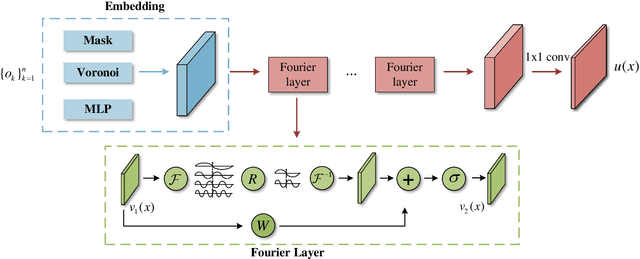
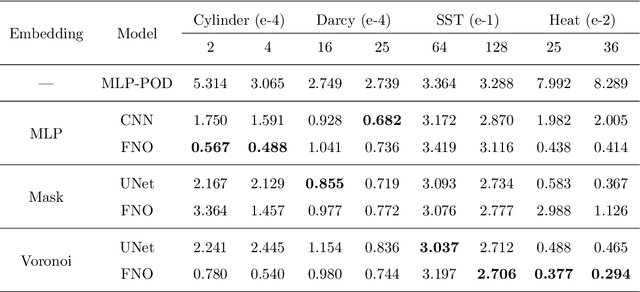


Abstract:Perception of the full state is an essential technology to support the monitoring, analysis, and design of physical systems, one of whose challenges is to recover global field from sparse observations. Well-known for brilliant approximation ability, deep neural networks have been attractive to data-driven flow and heat field reconstruction studies. However, limited by network structure, existing researches mostly learn the reconstruction mapping in finite-dimensional space and has poor transferability to variable resolution of outputs. In this paper, we extend the new paradigm of neural operator and propose an end-to-end physical field reconstruction method with both excellent performance and mesh transferability named RecFNO. The proposed method aims to learn the mapping from sparse observations to flow and heat field in infinite-dimensional space, contributing to a more powerful nonlinear fitting capacity and resolution-invariant characteristic. Firstly, according to different usage scenarios, we develop three types of embeddings to model the sparse observation inputs: MLP, mask, and Voronoi embedding. The MLP embedding is propitious to more sparse input, while the others benefit from spatial information preservation and perform better with the increase of observation data. Then, we adopt stacked Fourier layers to reconstruct physical field in Fourier space that regularizes the overall recovered field by Fourier modes superposition. Benefiting from the operator in infinite-dimensional space, the proposed method obtains remarkable accuracy and better resolution transferability among meshes. The experiments conducted on fluid mechanics and thermology problems show that the proposed method outperforms existing POD-based and CNN-based methods in most cases and has the capacity to achieve zero-shot super-resolution.
Multi-fidelity surrogate modeling for temperature field prediction using deep convolution neural network
Jan 17, 2023



Abstract:Temperature field prediction is of great importance in the thermal design of systems engineering, and building the surrogate model is an effective way for the task. Generally, large amounts of labeled data are required to guarantee a good prediction performance of the surrogate model, especially the deep learning model, which have more parameters and better representational ability. However, labeled data, especially high-fidelity labeled data, are usually expensive to obtain and sometimes even impossible. To solve this problem, this paper proposes a pithy deep multi-fidelity model (DMFM) for temperature field prediction, which takes advantage of low-fidelity data to boost the performance with less high-fidelity data. First, a pre-train and fine-tune paradigm are developed in DMFM to train the low-fidelity and high-fidelity data, which significantly reduces the complexity of the deep surrogate model. Then, a self-supervised learning method for training the physics-driven deep multi-fidelity model (PD-DMFM) is proposed, which fully utilizes the physics characteristics of the engineering systems and reduces the dependence on large amounts of labeled low-fidelity data in the training process. Two diverse temperature field prediction problems are constructed to validate the effectiveness of DMFM and PD-DMFM, and the result shows that the proposed method can greatly reduce the dependence of the model on high-fidelity data.
Consistency regularization-based Deep Polynomial Chaos Neural Network Method for Reliability Analysis
Apr 04, 2022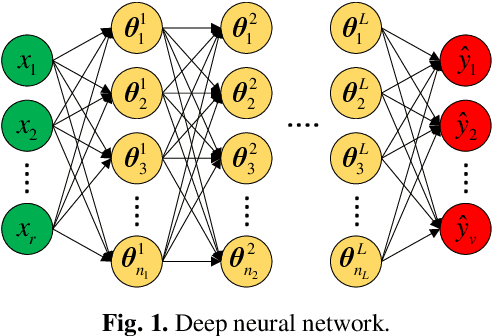
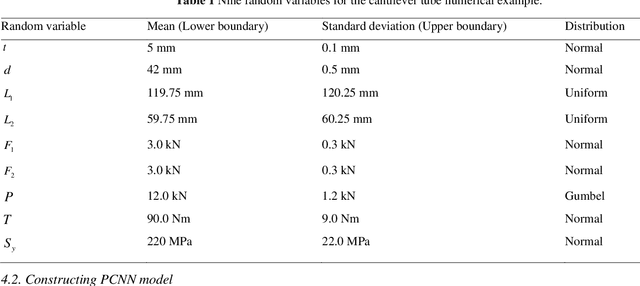
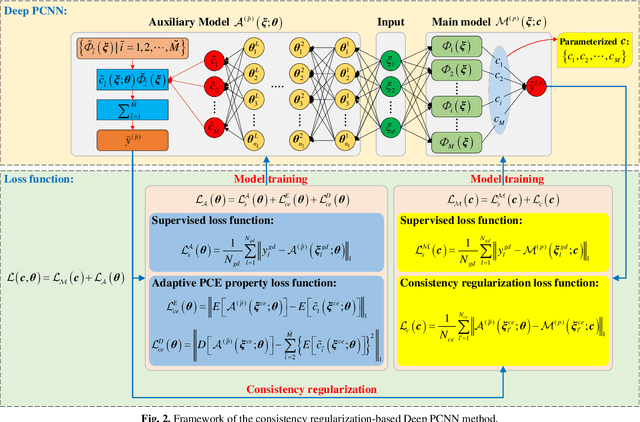
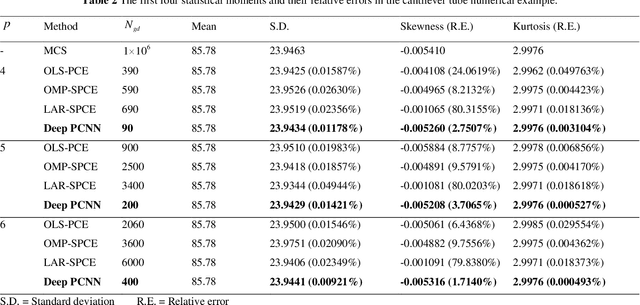
Abstract:Polynomial chaos expansion (PCE) is a powerful surrogate model-based reliability analysis method. Generally, a PCE model with a higher expansion order is usually required to obtain an accurate surrogate model for some complex non-linear stochastic systems. However, the high-order PCE increases the number of labeled data required for solving the expansion coefficients. To alleviate this problem, this paper proposes a consistency regularization-based deep polynomial chaos neural network (Deep PCNN) method, including the low-order adaptive PCE model (the auxiliary model) and the high-order polynomial chaos neural network (the main model). The expansion coefficients of the main model are parameterized into the learnable weights of the polynomial chaos neural network, realizing iterative learning of expansion coefficients to obtain more accurate high-order PCE models. The auxiliary model uses a proposed consistency regularization loss function to assist in training the main model. The consistency regularization-based Deep PCNN method can significantly reduce the number of labeled data in constructing a high-order PCE model without losing accuracy by using few labeled data and abundant unlabeled data. A numerical example validates the effectiveness of the consistency regularization-based Deep PCNN method, and then this method is applied to analyze the reliability of two aerospace engineering systems.
Semi-supervision semantic segmentation with uncertainty-guided self cross supervision
Mar 15, 2022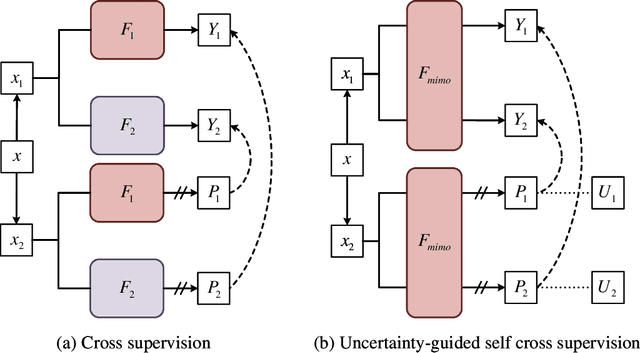

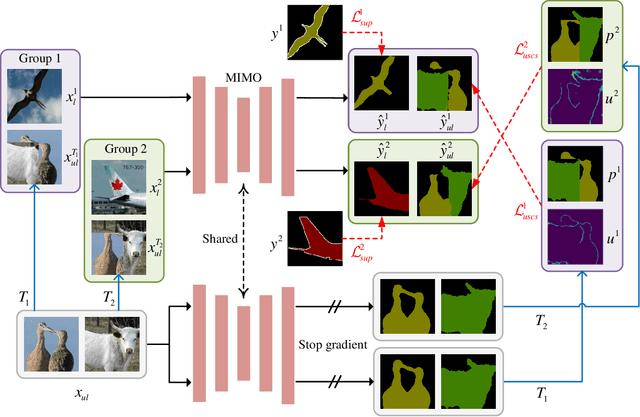

Abstract:As a powerful way of realizing semi-supervised segmentation, the cross supervision method learns cross consistency based on independent ensemble models using abundant unlabeled images. However, the wrong pseudo labeling information generated by cross supervision would confuse the training process and negatively affect the effectiveness of the segmentation model. Besides, the training process of ensemble models in such methods also multiplies the cost of computation resources and decreases the training efficiency. To solve these problems, we propose a novel cross supervision method, namely uncertainty-guided self cross supervision (USCS). In addition to ensemble models, we first design a multi-input multi-output (MIMO) segmentation model which can generate multiple outputs with shared model and consequently impose consistency over the outputs, saving the cost on parameters and calculations. On the other hand, we employ uncertainty as guided information to encourage the model to focus on the high confident regions of pseudo labels and mitigate the effects of wrong pseudo labeling in self cross supervision, improving the performance of the segmentation model. Extensive experiments show that our method achieves state-of-the-art performance while saving 40.5% and 49.1% cost on parameters and calculations.
Contrastive Enhancement Using Latent Prototype for Few-Shot Segmentation
Mar 08, 2022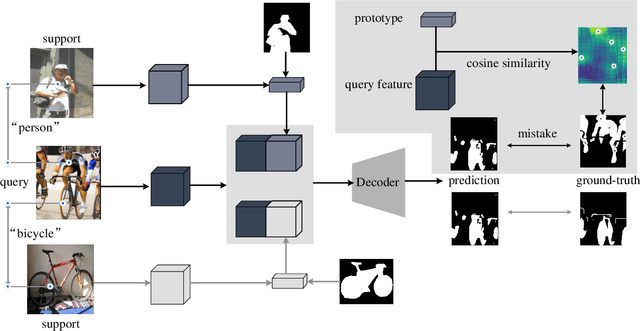
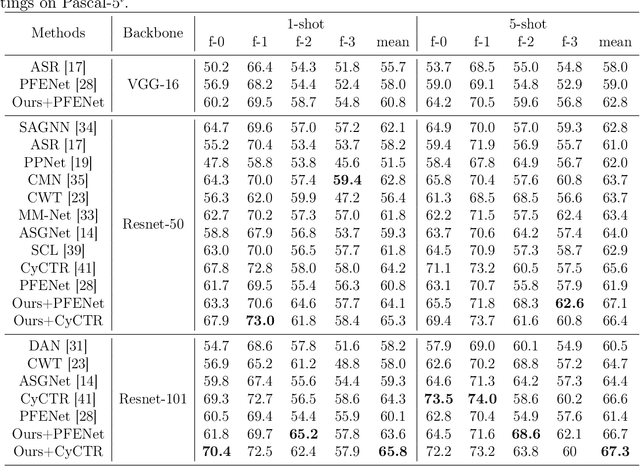
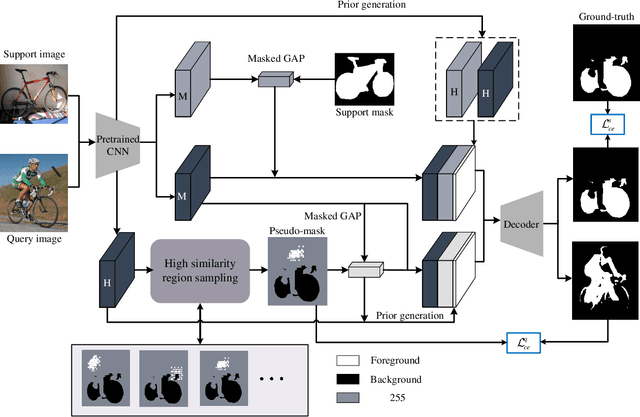
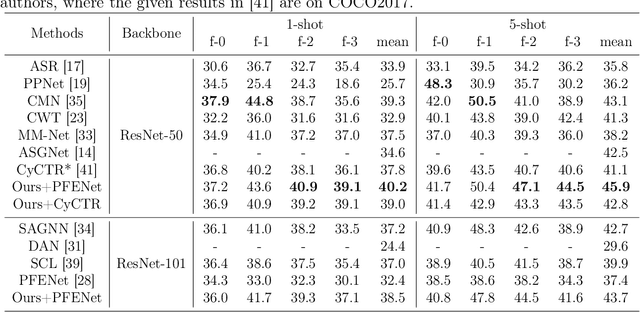
Abstract:Few-shot segmentation enables the model to recognize unseen classes with few annotated examples. Most existing methods adopt prototype learning architecture, where support prototype vectors are expanded and concatenated with query features to perform conditional segmentation. However, such framework potentially focuses more on query features while may neglect the similarity between support and query features. This paper proposes a contrastive enhancement approach using latent prototypes to leverage latent classes and raise the utilization of similarity information between prototype and query features. Specifically, a latent prototype sampling module is proposed to generate pseudo-mask and novel prototypes based on features similarity. The module conveniently conducts end-to-end learning and has no strong dependence on clustering numbers like cluster-based method. Besides, a contrastive enhancement module is developed to drive models to provide different predictions with the same query features. Our method can be used as an auxiliary module to flexibly integrate into other baselines for a better segmentation performance. Extensive experiments show our approach remarkably improves the performance of state-of-the-art methods for 1-shot and 5-shot segmentation, especially outperforming baseline by 5.9% and 7.3% for 5-shot task on Pascal-5^i and COCO-20^i. Source code is available at https://github.com/zhaoxiaoyu1995/CELP-Pytorch
Physics-Informed Deep Monte Carlo Quantile Regression method for Interval Multilevel Bayesian Network-based Satellite Heat Reliability Analysis
Feb 14, 2022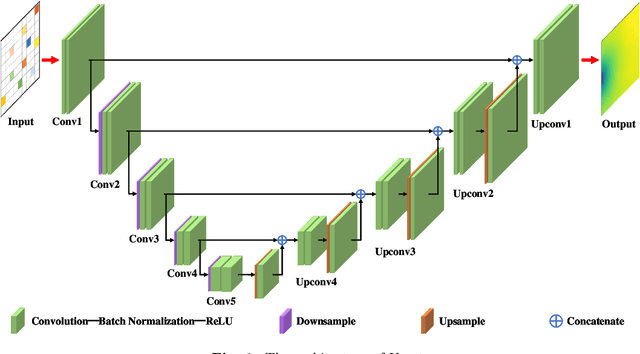
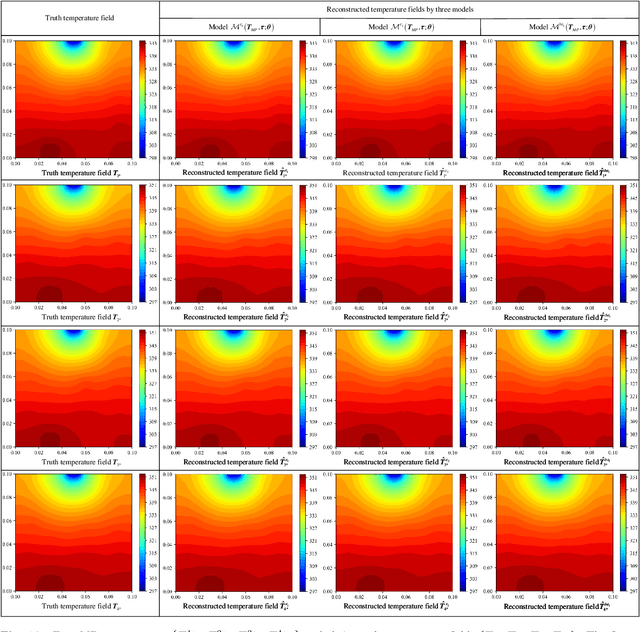


Abstract:Temperature field reconstruction is essential for analyzing satellite heat reliability. As a representative machine learning model, the deep convolutional neural network (DCNN) is a powerful tool for reconstructing the satellite temperature field. However, DCNN needs a lot of labeled data to learn its parameters, which is contrary to the fact that actual satellite engineering can only acquire noisy unlabeled data. To solve the above problem, this paper proposes an unsupervised method, i.e., the physics-informed deep Monte Carlo quantile regression method, for reconstructing temperature field and quantifying the aleatoric uncertainty caused by data noise. For one thing, the proposed method combines a deep convolutional neural network with the known physics knowledge to reconstruct an accurate temperature field using only monitoring point temperatures. For another thing, the proposed method can quantify the aleatoric uncertainty by the Monte Carlo quantile regression. Based on the reconstructed temperature field and the quantified aleatoric uncertainty, this paper models an interval multilevel Bayesian Network to analyze satellite heat reliability. Two case studies are used to validate the proposed method.
Deep Monte Carlo Quantile Regression for Quantifying Aleatoric Uncertainty in Physics-informed Temperature Field Reconstruction
Feb 14, 2022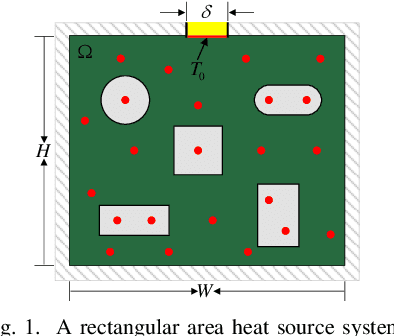
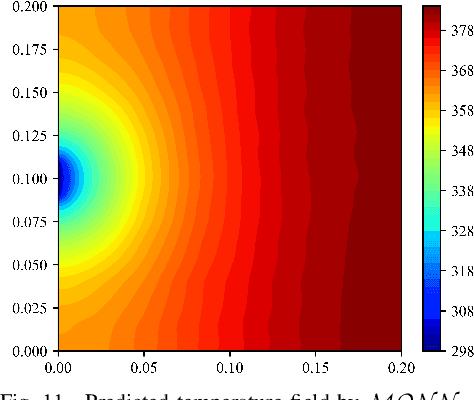
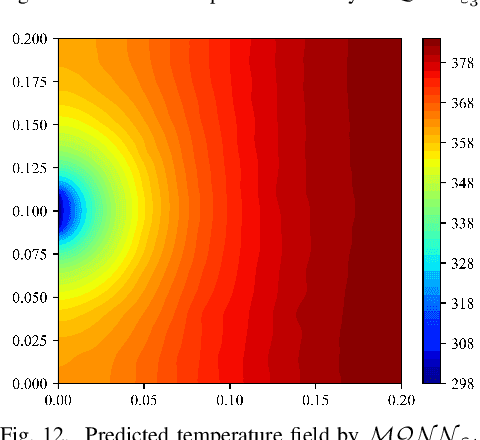
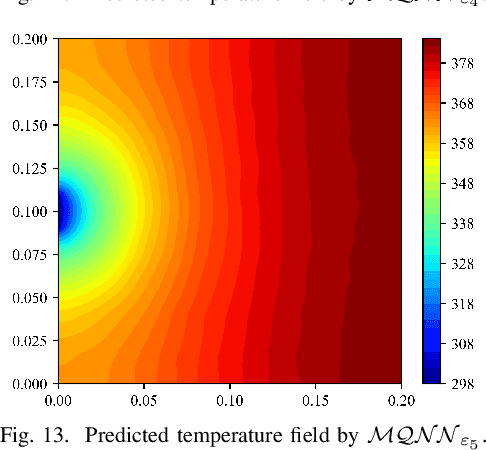
Abstract:For the temperature field reconstruction (TFR), a complex image-to-image regression problem, the convolutional neural network (CNN) is a powerful surrogate model due to the convolutional layer's good image feature extraction ability. However, a lot of labeled data is needed to train CNN, and the common CNN can not quantify the aleatoric uncertainty caused by data noise. In actual engineering, the noiseless and labeled training data is hardly obtained for the TFR. To solve these two problems, this paper proposes a deep Monte Carlo quantile regression (Deep MC-QR) method for reconstructing the temperature field and quantifying aleatoric uncertainty caused by data noise. On the one hand, the Deep MC-QR method uses physical knowledge to guide the training of CNN. Thereby, the Deep MC-QR method can reconstruct an accurate TFR surrogate model without any labeled training data. On the other hand, the Deep MC-QR method constructs a quantile level image for each input in each training epoch. Then, the trained CNN model can quantify aleatoric uncertainty by quantile level image sampling during the prediction stage. Finally, the effectiveness of the proposed Deep MC-QR method is validated by many experiments, and the influence of data noise on TFR is analyzed.
Physics-informed Convolutional Neural Networks for Temperature Field Prediction of Heat Source Layout without Labeled Data
Sep 26, 2021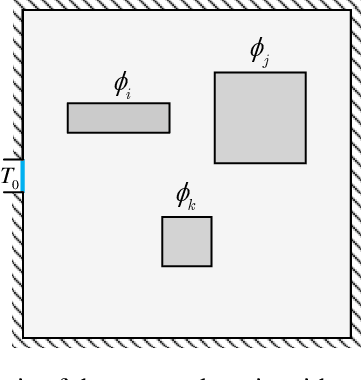
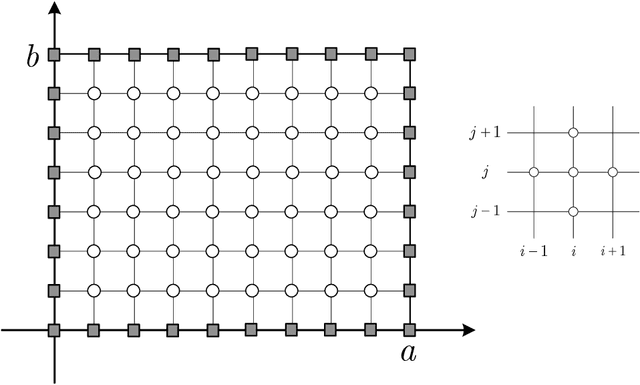
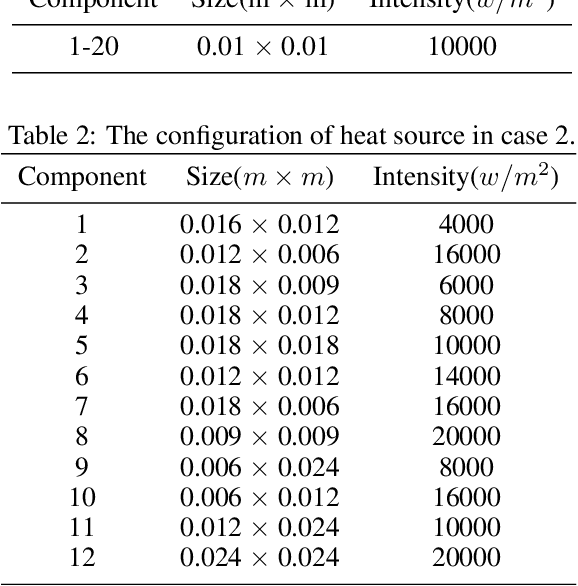

Abstract:Recently, surrogate models based on deep learning have attracted much attention for engineering analysis and optimization. As the construction of data pairs in most engineering problems is time-consuming, data acquisition is becoming the predictive capability bottleneck of most deep surrogate models, which also exists in surrogate for thermal analysis and design. To address this issue, this paper develops a physics-informed convolutional neural network (CNN) for the thermal simulation surrogate. The network can learn a mapping from heat source layout to the steady-state temperature field without labeled data, which equals solving an entire family of partial difference equations (PDEs). To realize the physics-guided training without labeled data, we employ the heat conduction equation and finite difference method to construct the loss function. Since the solution is sensitive to boundary conditions, we properly impose hard constraints by padding in the Dirichlet and Neumann boundary conditions. In addition, the neural network architecture is well-designed to improve the prediction precision of the problem at hand, and pixel-level online hard example mining is introduced to overcome the imbalance of optimization difficulty in the computation domain. The experiments demonstrate that the proposed method can provide comparable predictions with numerical method and data-driven deep learning models. We also conduct various ablation studies to investigate the effectiveness of the network component and training methods proposed in this paper.
 Add to Chrome
Add to Chrome Add to Firefox
Add to Firefox Add to Edge
Add to Edge